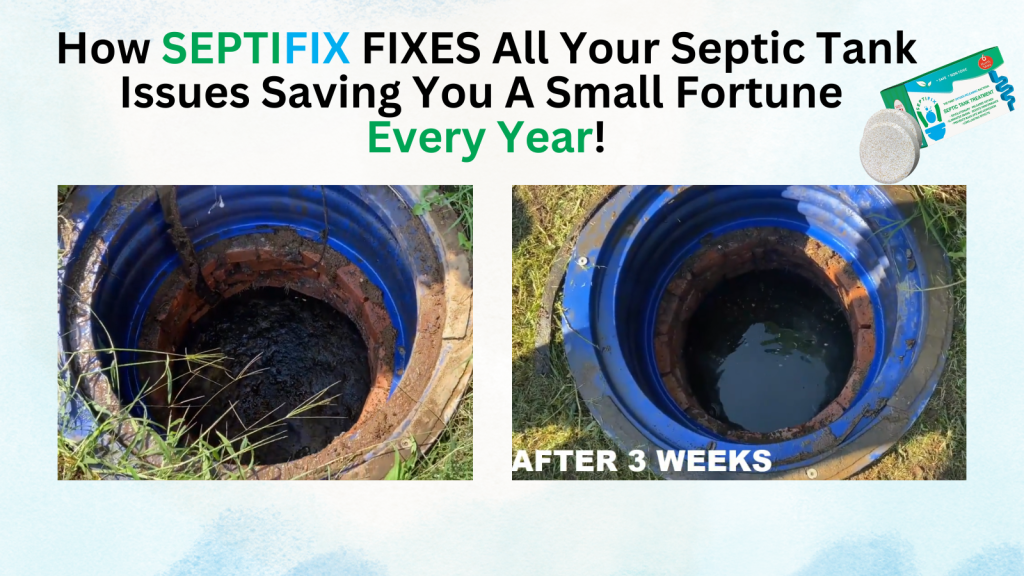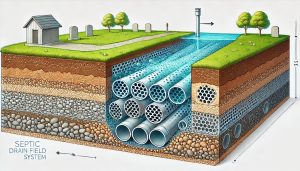If you’re planning to install a septic tank, the first question you might ask is: Do you have to have a permit to put in a septic tank? The answer, in almost every case, is yes. Permits ensure septic systems—also known as onsite wastewater treatment systems or individual sewage disposal systems—are installed safely and meet local environmental codes.
Whether you’re building a new home in a rural area or replacing an old tank, understanding your local regulations is crucial. This guide covers when you need a permit, who issues it, and how to navigate the process smoothly.
Table of Content
- Why Permits Matter for Septic Tank Installation
- When a Septic Permit Is Required
- What the Septic Permit Process Looks Like
- Different Terms for Septic Systems by Region
- Who Issues Septic System Permits?
- Septic Tank Requirements in the United States
- Septic Tank Requirements in the United Kingdom
- Septic Tank Requirements in Australia
- DIY Installation and Permit Risks
- Septifix
- Septic Permit Links by State
Why Permits Matter for Septic Tank Installation
Septic permits exist for good reason. Improperly installed systems can lead to groundwater contamination, soil pollution, and even structural damage to your home. Local health and environmental agencies use permits to:
- Protect public health
- Preserve local water sources
- Enforce design and safety standards
Permits also protect property owners by ensuring systems are built to code and less likely to fail.
Article: Septic Regulations by State: Essential Rules and Requirements You Need to Know
When a Septic Permit Is Required
You generally need a permit for any of the following:
- New home construction
- Replacing an existing septic system
- Changing or relocating system components
- Converting a residence to a business property
Some counties offer minor exemptions for small, remote, or seasonal dwellings. However, these are rare and often still require soil testing or inspections.
In addition, commercial septic systems almost always require additional review, especially when higher wastewater volumes are expected.
What the Septic Permit Process Looks Like
Permit requirements vary by state, but most follow a similar process:
1. Soil and Site Evaluation
Before approval, the property must pass a percolation test (or perc test) to ensure the soil can absorb wastewater safely. Some areas may refer to this as a soil suitability test or site analysis.
2. System Design
A licensed septic designer or engineer will create a layout based on the site evaluation. This includes tank size, drainfield location, and distances from water sources.
3. Application and Review
You submit the design and application to your local health department or environmental services office. They review the plan, often conducting a field inspection.
4. Installation and Final Inspection
After approval, you may begin installation—usually by a licensed contractor. A final inspection confirms everything meets code before the system is approved for use.
Different Terms for Septic Systems by Region
It helps to know that “septic system” isn’t the only term used across the U.S. Depending on your region, you might encounter:
- Onsite sewage disposal system – Pacific Northwest
- Wastewater treatment unit – Southern states like Texas
- Household wastewater system – Used in New Mexico and Arizona
- Sanitary disposal system – Midwest and Great Lakes states
- Decentralized wastewater treatment system – Used in federal documents
These terms all refer to similar types of systems but may appear in different state permitting documents.
Who Issues Septic System Permits?
In most cases, one of the following offices handles septic permits:
- County Health Departments
- State Environmental Agencies
- Local Building and Planning Departments
For example, in Florida, the Department of Health handles septic permits. In Oregon, it’s managed by DEQ or local county sanitation offices.
You can often download applications directly from these departments’ websites. Some counties also offer online portals to track your application’s status.
Septic Tank Requirements in the United States
In the U.S., septic system regulations are primarily managed at the state and local level, so requirements can vary widely. However, most jurisdictions share these common requirements:
- Soil and Site Evaluation: A percolation test or soil analysis is required to determine system feasibility.
- Licensed Professionals: Most states require a licensed installer or engineer to design and install the system.
- Minimum Setbacks: Systems must be a certain distance from wells, property lines, and water bodies (often 50–100 feet).
- Permit and Inspection: A permit is issued before installation, and the system must pass a final inspection.
Some states, such as California, Florida, and Texas, also regulate alternative systems, like aerobic treatment units or mound systems, based on site limitations.
Note: Greywater reuse laws and seasonal usage rules can vary. Always consult your county health department or environmental services agency.
Septic Tank Requirements in the United Kingdom
In the UK, the Environment Agency (England), Natural Resources Wales, SEPA (Scotland), and DAERA (Northern Ireland) regulate septic systems. The UK has recently tightened rules to reduce water pollution:
- General Binding Rules: Systems must meet these legal requirements without needing a permit—unless near protected water bodies.
- Permit Requirements: If your system discharges into surface water (like a stream), a permit may be needed.
- Modern Standards: Septic tanks must comply with BS EN 12566 (British Standards).
- No Discharge into Ditches or Surface Waters: If your tank does this, you must upgrade to a treatment plant.
Homes with older tanks must upgrade or replace non-compliant systems, especially when preparing to sell the property. In many cases, meeting current environmental and health regulations requires this.
Meanwhile, in the UK, people often use terms like sewage treatment plant or package treatment unit interchangeably with septic systems. These terms are especially common in discussions about wastewater solutions for environmentally sensitive areas.
Septic Tank Requirements in Australia
In Australia, septic tanks fall under state and territory regulations, with local councils playing a major role in approvals. Despite regional differences, there are standard national guidelines:
- AS/NZS 1546 Compliance: All septic tanks must meet Australian Standard requirements for construction and performance.
- Council Approval Required: You must submit detailed plans, soil reports, and specifications to your local council.
- Accredited Installers: Many states require installation by a licensed or accredited wastewater professional.
- Ongoing Maintenance: Some councils require mandatory pump-outs or system servicing logs.
In rural and remote areas, people often use composting toilets or aerated wastewater treatment systems (AWTS) instead of traditional septic tanks.
Popular terms include on-site sewage facilities (OSSF) and household wastewater systems, especially in Queensland and New South Wales.
Permit Costs and Timeline
The cost of a septic permit depends on your state and system complexity. Here’s a rough idea:
- Basic residential permit: $250–$800
- Perc test and evaluation: $300–$1,000
- Total cost with design and inspection: $1,500–$3,000
Approval timelines vary too. In high-demand areas, expect delays of several weeks. In less crowded regions, you might get approval in a few days.
DIY Installation and Permit Risks
While some homeowners want to install a system themselves, most jurisdictions require a licensed installer. In fact, DIY installations without a permit can lead to serious consequences, such as:
- Fines and legal action
- Problems during resale or appraisal
- Costly repairs if the system fails
- Environmental damage liability
Even if your state allows homeowner installs, you’ll still need to follow strict guidelines. Most jurisdictions typically require inspections, and you may still face liability if something goes wrong.
Tips for Getting Approved Faster
Want to speed up the process? Follow these best practices:
- Hire a local septic pro familiar with your county’s rules.
- Check setbacks and zoning before designing the system.
- Test soil early to determine if your lot qualifies.
- Keep paperwork organized and respond promptly to requests.
- Schedule inspections in advance, especially during busy building seasons.
Contact Info and Resources in the United States
Here are helpful links and resources to guide your next steps:
- EPA: Septic Systems Overview
- Local Septic Professionals Directory
- State Department of Health Contact Page
Conclusion
So, do you have to have a permit to put in a septic tank? In nearly every situation, yes—and for good reason. After all, permits ensure your septic system is safe, legal, and built to last. From soil tests to final inspections, understanding the process ahead of time can save you money and stress.
Septifix

The Role of Perforated Pipes in Drain Fields
What Happens During a Pumping Service?
Septic Tanks vs. Sewer Systems | Choosing the Right Option
Directory | Virginia Septic Service Providers | Part 2
Directory | Virginia Septic Service Providers : Best Professionals | Part 1
Septic Treatments for Odor Control: Best Methods for Eliminating Unpleasant Smells
How to Maintain a Healthy Bacteria Balance | Tips to Ensure Your Septic System Has the Right Microbial Environment
Directory | Vermont Septic Service Providers : Best Professionals
Septic Permit Links by State
🇺🇸 United States
- do i need a permit to install a septic tank on rural land in texas
- how to get a septic tank permit in florida
- how to apply for a septic permit in california
- is a permit required to replace an old septic tank in the us
- can i install a septic tank without a permit in rural america
- septic tank site and soil test requirements usa
🇬🇧 United Kingdom
- uk septic tank general binding rules explained
- do you need planning permission for a septic tank in the uk
- septic tank installation permit process in scotland
- rules for septic system discharge into streams in the uk
🇦🇺 Australia
- do you need council approval for a septic tank in australia
- requirements for septic system installation in new south wales
- regulations for installing a septic system near water in australia
- do you need a permit to install an on-site sewage facility in queensland
- do i need a license to install a septic tank in victoria australia








